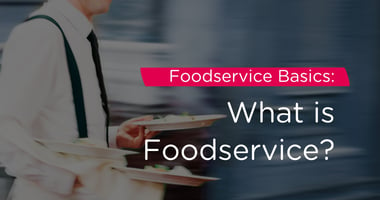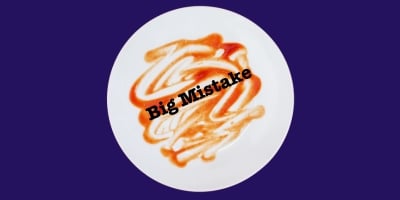The world of foodservice can bewilder even food and beverage industry veterans.
Selling to Foodservice: Do you have the foodservice resources you need?
Selling to foodservice is different from selling in retail, and the channel requires a whole other set of tools and resources. Save time and money by making sure your business speaks the foodservice language before you start your journey.
Foodservice isn’t hard, but it is complicated. There’s nothing else quite like it, and to find success, you need industry-specific tools to make B2B sales.
Foodservice Research and Insights
Selling to foodservice operators means understanding their needs.
Operator need #1: Increased traffic. Understanding deeper, underlying consumer trends, through unbiased consumer data and foodservice expert insights, will help you create and market the products diners want and that fill consumer needs. For operators, serving products that address those needs increases new traffic and maintains patron loyalty. Happy consumers > happy operators > happy manufacturer. Win-win-win.
Operator need #2: Reduced costs. An end-user survey gives you the information you need about your foodservice customer – the operator or chef who will make purchasing decisions. It tells you what those users think about your product’s performance, its versatility, and its ease of use. Delicious products that work across dayparts and across the menu are more efficient and save operators money. Products that are easy to use save kitchen and training time, reducing staff costs. Again, win-win for both operator and manufacturer.
GDSN
More than half of foodservice purchasing decisions are made online. Many of those decisions are made late at night, after the restaurant has closed, when your DSR and sales team are sleeping.
Distributors and their DSRs look to your GDSN data for all the relevant information about your product, and in fact it creates the sell sheets they use to communicate the proposition, features, benefits, cooking and handling instructions, ingredients, nutritionals and much more about your product.
Ask yourself – when you’re shopping online and deciding between similar products, do you choose the one with fewer item pictures, or the one with more? The one with less detail, or the one with more? The one that includes directions or instructions, or the one that doesn’t?
Make sure your data is the best, most accurate representation of your product – for the DSRs working to sell your product during the day, and for the operator researching products on their distributor portals or Dot Food’s Shop site late at night.
Pricing Architecture/Price Sheet
Retail-style pricing can quickly take your P&L into the red if you don’t know how to plan for your future. Foodservice requires a pricing architecture that allows a brand to sell across multiple segments and across distribution and CM/GPO partnership programs, and that establishes objective guidelines for managing trade spend.
ESA’s industry-leading pricing architecture model helps develop a bracketed pricing structure to maintain brand pricing integrity across foodservice, retail and D2C channels. It allows for volume-based pricing discounts to quickly work with higher-volume orders as your business grows, ensures a structure that works with re-distribution, and helps manage trade spend with brokers and direct sales teams.
Foodservice is different from retail, and has its own tools for success. Reach out for more information: info@elohi.us.
.png?width=400&height=400&name=Untitled%20(600%20%C3%97%20600%20px).png)

.jpg?height=200&name=Big%20Mistake%20(2).jpg)
